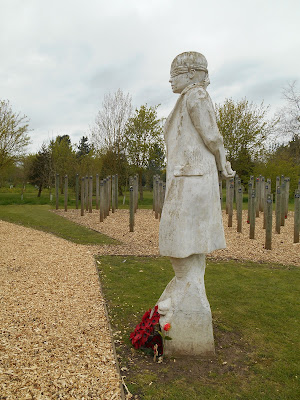In all 3,080 men were sentenced to death under the British Army Act between 4th August 1914 and 31st March 1920. The rationale behind the execution was that it would deter other soldiers from deserting, mutiny, disobedience etc. The first execution by firing squad to be carried out by the British Army in the First World War was on 8th September 1914. 90% of the death sentences were not carried out but 346 men were executed by firing squads.
Before their trials soldiers were offered the assistance of an officer to act as their defending counsel. Not all soldiers accepted the help offered and those that did were assigned officers who were rarely legally qualified or skilled in advocacy work. There were plenty of qualified solicitors and articled clerks in the army but they were rarely called upon to defend the accused soldiers. In many cases the soldiers were clearly suffering from mental collapse or shell shock. Today we would call it post-traumatic stress disorder. However there was an absence of informed medical opinions at the courts martial. Therefore the soldiers cannot be considered to have had fair trials.
The reasons for the death penalty were as follows:
268 for desertion
18 for cowardice
7 for quitting their post
5 for striking a superior officer
5 for disobedience
4 for mutiny
2 for sleeping at their post
2 for casting away arms
At least 37 for murder
Military capital punishment was abolished in 1930 for all offences except mutiny and treachery.
There is a poignant memorial to the soldiers at the National Memorial Arboretum near Alrewas in Staffordshire. There is a post with a name label for each of the 306 executed soldiers arranged in a semi-circle behind the statue of a blindfolded young soldier. The semi-circle is in the style of a Greek theatre and symbolises "tragedy".
The 10ft-high figure is modelled on Private Herbert Burden, of the Northumberland Fusiliers. He lied about his age in order to be allowed to join up and was executed for desertion, aged 17 on 21st July 1915. The memorial was created by Birmingham artist Andy de Comyn and it was unveiled in 2001.
Two members of the Somerset Light Infantry were executed, although neither of them actually came from Somerset:
Private Louis R Phillips
Louis Phillips lived in London but chose to serve with the Somerset Light Infantry. He was sent to France in April 1915 and served near Ypres, where there was heavy fighting. He went missing for 4 days in July the same year. He was sentenced to death by a court martial and was executed in Ypres at 4.20am on 19th August 1915
Private Alfred Leonard Jeffries
Alfred Jeffries, who lived in the St Philip's area of Bristol, enlisted on the outbreak of war in 1914. He was sent to France in May 1915 but was injured shortly afterwards. He was hospitalised in November 1915 suffering from a nervous breakdown. He returned to his regiment in early 1916 but he deserted in August 1916 because he was unable to stand the strain. He was arrested in Le Havre while trying to catch a ferry back to England. His brother Arthur, who was serving in the same battalion, was killed in action in September 1916. Alfred was executed near the village of Penin at 6.10am on 1st November 1916.
Further Reading:
Shot at Dawn: Executions in World War One by authority of the British Army Act: Julian Putkowski and Julian Sykes. Wharncliffe Publishing, 1989
Shot At Dawn Memorial
Louis Phillips's post
Alfred L Jeffries's Post





No comments:
Post a Comment